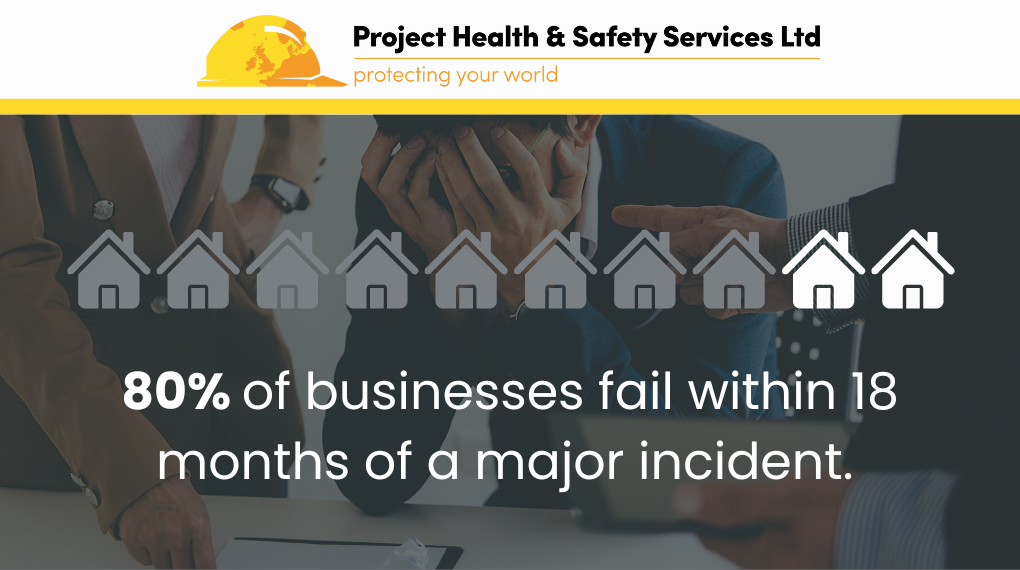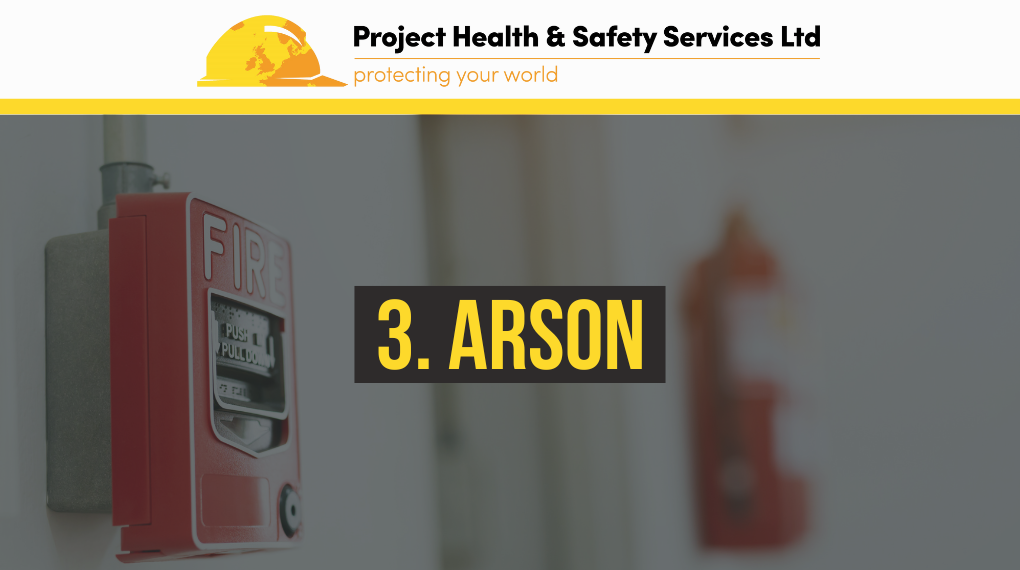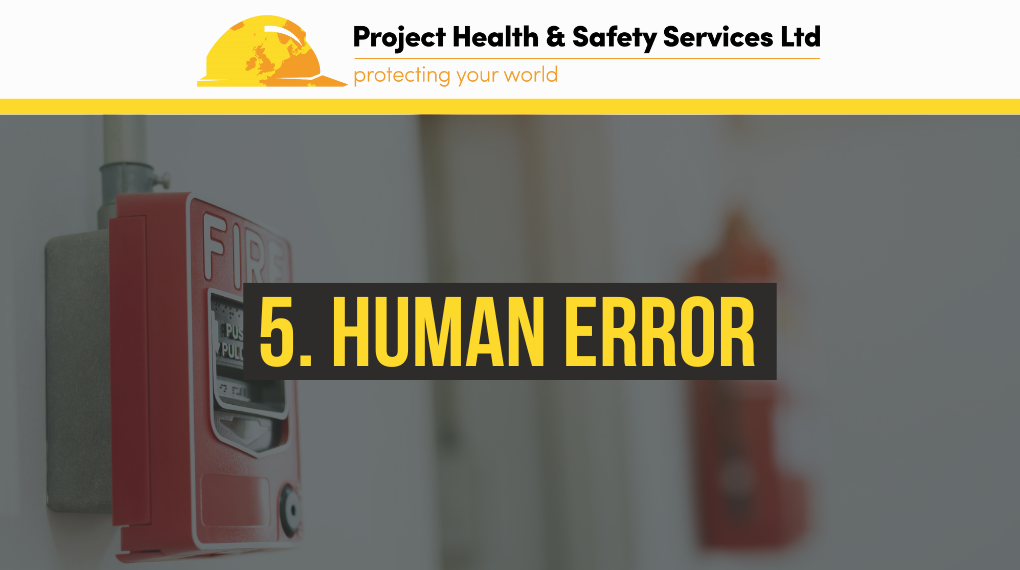Fires can devastate buildings, workplaces, and lives in a matter of minutes. With the power to cause major damage to property and delays to project deadlines, a fire could set back or potentially end all your hard work. Most importantly, fires can pose a serious threat to life. Fire Risk Assessments are therefore an essential requirement for ensuring the safety of your employees and anyone else affected by your activities.

A Fire Risk Assessment is a legal requirement for any work place or premises in Scotland under the Fire Safety Scotland Act 2005 and the Fire Safety Scotland Regulations 2006, and in England and Wales under the Regulatory Reform (Fire Safety) Order 2005. The Fire Risk Assessment must be written down and documented by a competent person and must be communicated to all occupants of the building.
There are around 22,000 workplace fires reported in the UK each year. This staggering amount represents the importance of understanding the serious and dangerous effects of fires in the workplace and how we can prevent them. Awareness and prevention are absolutely critical in ensuring fire safety.
So, what are the top five fire hazards to look out for in your workplace and how can you prevent them?

Faulty electrical equipment is without a doubt the most common cause of workplace fires. Electrical faults can be found in almost any workplace – from offices to warehouses – highlighting why this type of fire is so common. Defective wiring, overloaded sockets or plugs, and faulty appliances are all high-risk factors that may result in threatening electrical fires which are particularly dangerous as they cannot be put out with water.
Prevention
Electrical equipment in workplaces requires regular checking and ongoing care to ensure they do not pose any fire safety hazards. Legally, businesses must carry out a Portable Appliance Test (PAT) at regular intervals to ensure that all electrical equipment at a workplace is functioning safely. Alongside this prevention measure, workers should be sure to check electrical equipment prior to use and switch off electrical appliances and sockets when not in use. Faulty equipment should be removed from use immediately.

Workplaces which store or work with flammable or combustible materials are at very high risk of fires. Those who utilise these materials must know how to store, dispose, and handle them correctly as improper storage is a major contributor to workplace fires.
Prevention
Due to the extremely high risks, there must be regular education and training on the handling of these materials. Sparks from electrical work or tools may travel far and can set light to flammable materials such as flammable chemicals and oil barrels, or cardboard and paper waste. Therefore, all materials should be stored in a designated flame proof, COSHH (Control of Substances Hazardous for Health) store.

The act of deliberately setting a fire is not as rare as most would imagine. Arson is found to be one of the top causes of workplace fires and can have serious implications for businesses and their employees. This is most found in construction sites because of the availability of flammable materials. While this is quite difficult to prevent, there are measures that can be put in place to reduce the risk of arson.
Prevention
Having deterrents in place such as security patrols, lighting, CCTV and fencing can help to reduce the potential of arson. Workplaces should also have systems in place to ensure their premises are secure and workers should stay alert to any suspicious behaviour.

Negligence or lack of care in the workplace can create lots of opportunities for fires to start. Whether for convenience or in order to get the job done more quickly, workers often take short cuts which can include not following the correct procedures, putting themselves, their colleagues and workplace at risk. Negligence can also be seen in untidy workplaces where a build up of rubbish, dirt and grease can cause machinery to overheat, creating a fire risk.
Prevention
Training is absolutely crucial to reduce negligence in workplaces. All employees should receive adequate training on the proper handling and storage of materials to avoid any fire hazards. Staff should also be educated on the risks associated with these negligent acts so that they understand the importance of following procedure. It is also important that staff have been trained on the correct fire safety procedure to follow if a fire does break out. See Basic Fire Safety Awareness eLearning Course here..

Human error is typically not intentional; however, this does not create less of a fire risk. Accidents can happen such as spilling flammable liquid, burning food, or using equipment incorrectly which can lead to the risk of fire.
Prevention
Unfortunately, some cases of human error are unavoidable, therefore it is vital that all workplaces have access to proper fire safety resources and equipment. Smoke detectors, fire alarm systems, and fire extinguishers should be properly installed in all workplaces. Without these resources, a fire can get out of hand quickly, while having these resources should reduce the risk of a fire spreading. Staff should be trained on how to use these resources and should know how to follow the correct evacuation procedure. See Fire Marshal Training here.
Finally…
While these are the top five fire hazards that workplaces should look out for, the list does not stop here. Fire hazards are something that all businesses face and can be overwhelming to manage without support. Recognising and understanding these risks is absolutely vital to ensuring your safety. Fire Risk Assessments are the most efficient and thorough method of preventing any fire hazards in your workplace.
At PHSS we offer a full review of any potential fire hazards. Our competent and experienced NEBOSH Fire Safety accredited Health and Safety Advisors are able to provide you with a detailed Fire Risk Assessment Report and an Action Plan to ensure you know the necessary actions to take. So ensure your teams are protected from the potential risk of a fire and let us be the experts, so you don’t have to be.
Find more information here: Fire Risk Assessment – Project HSS
If you would like to enquire or have any questions, please do not hesitate to contact us on 0141 471 6266 or info@projecthss.co.uk.













